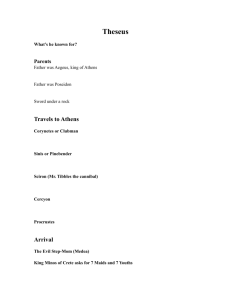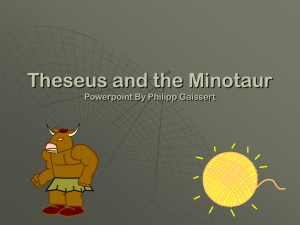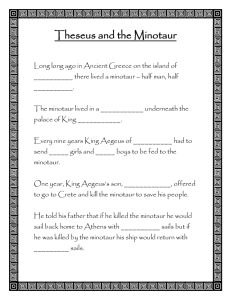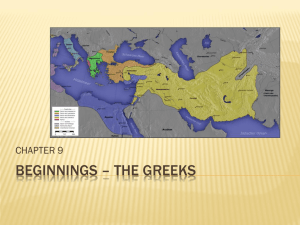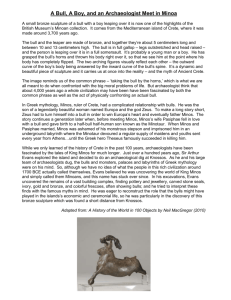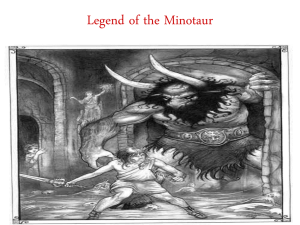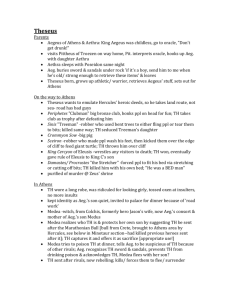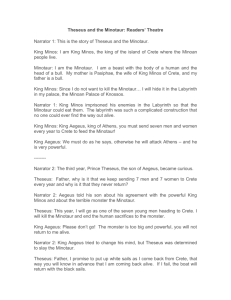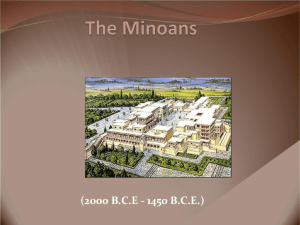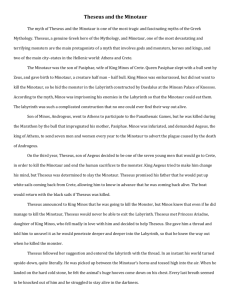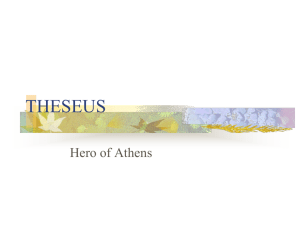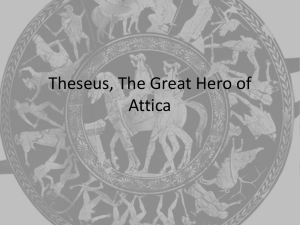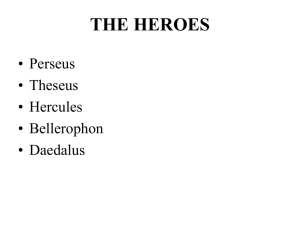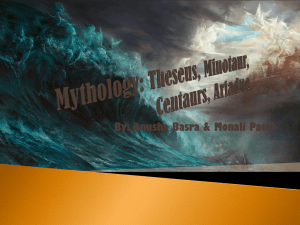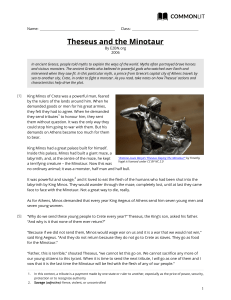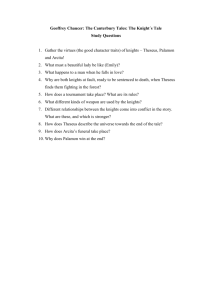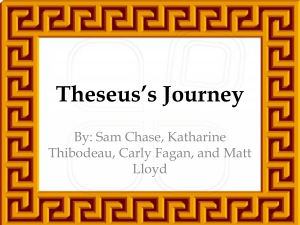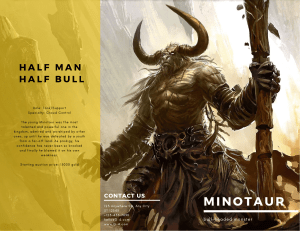Story of the Minotaur
advertisement
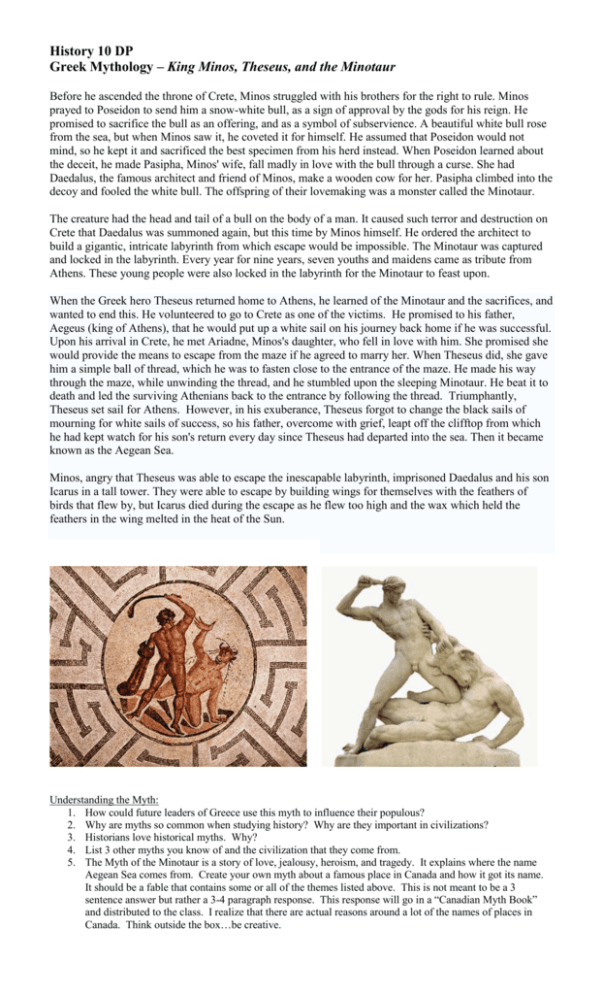
History 10 DP Greek Mythology – King Minos, Theseus, and the Minotaur Before he ascended the throne of Crete, Minos struggled with his brothers for the right to rule. Minos prayed to Poseidon to send him a snow-white bull, as a sign of approval by the gods for his reign. He promised to sacrifice the bull as an offering, and as a symbol of subservience. A beautiful white bull rose from the sea, but when Minos saw it, he coveted it for himself. He assumed that Poseidon would not mind, so he kept it and sacrificed the best specimen from his herd instead. When Poseidon learned about the deceit, he made Pasipha, Minos' wife, fall madly in love with the bull through a curse. She had Daedalus, the famous architect and friend of Minos, make a wooden cow for her. Pasipha climbed into the decoy and fooled the white bull. The offspring of their lovemaking was a monster called the Minotaur. The creature had the head and tail of a bull on the body of a man. It caused such terror and destruction on Crete that Daedalus was summoned again, but this time by Minos himself. He ordered the architect to build a gigantic, intricate labyrinth from which escape would be impossible. The Minotaur was captured and locked in the labyrinth. Every year for nine years, seven youths and maidens came as tribute from Athens. These young people were also locked in the labyrinth for the Minotaur to feast upon. When the Greek hero Theseus returned home to Athens, he learned of the Minotaur and the sacrifices, and wanted to end this. He volunteered to go to Crete as one of the victims. He promised to his father, Aegeus (king of Athens), that he would put up a white sail on his journey back home if he was successful. Upon his arrival in Crete, he met Ariadne, Minos's daughter, who fell in love with him. She promised she would provide the means to escape from the maze if he agreed to marry her. When Theseus did, she gave him a simple ball of thread, which he was to fasten close to the entrance of the maze. He made his way through the maze, while unwinding the thread, and he stumbled upon the sleeping Minotaur. He beat it to death and led the surviving Athenians back to the entrance by following the thread. Triumphantly, Theseus set sail for Athens. However, in his exuberance, Theseus forgot to change the black sails of mourning for white sails of success, so his father, overcome with grief, leapt off the clifftop from which he had kept watch for his son's return every day since Theseus had departed into the sea. Then it became known as the Aegean Sea. Minos, angry that Theseus was able to escape the inescapable labyrinth, imprisoned Daedalus and his son Icarus in a tall tower. They were able to escape by building wings for themselves with the feathers of birds that flew by, but Icarus died during the escape as he flew too high and the wax which held the feathers in the wing melted in the heat of the Sun. Understanding the Myth: 1. How could future leaders of Greece use this myth to influence their populous? 2. Why are myths so common when studying history? Why are they important in civilizations? 3. Historians love historical myths. Why? 4. List 3 other myths you know of and the civilization that they come from. 5. The Myth of the Minotaur is a story of love, jealousy, heroism, and tragedy. It explains where the name Aegean Sea comes from. Create your own myth about a famous place in Canada and how it got its name. It should be a fable that contains some or all of the themes listed above. This is not meant to be a 3 sentence answer but rather a 3-4 paragraph response. This response will go in a “Canadian Myth Book” and distributed to the class. I realize that there are actual reasons around a lot of the names of places in Canada. Think outside the box…be creative.
